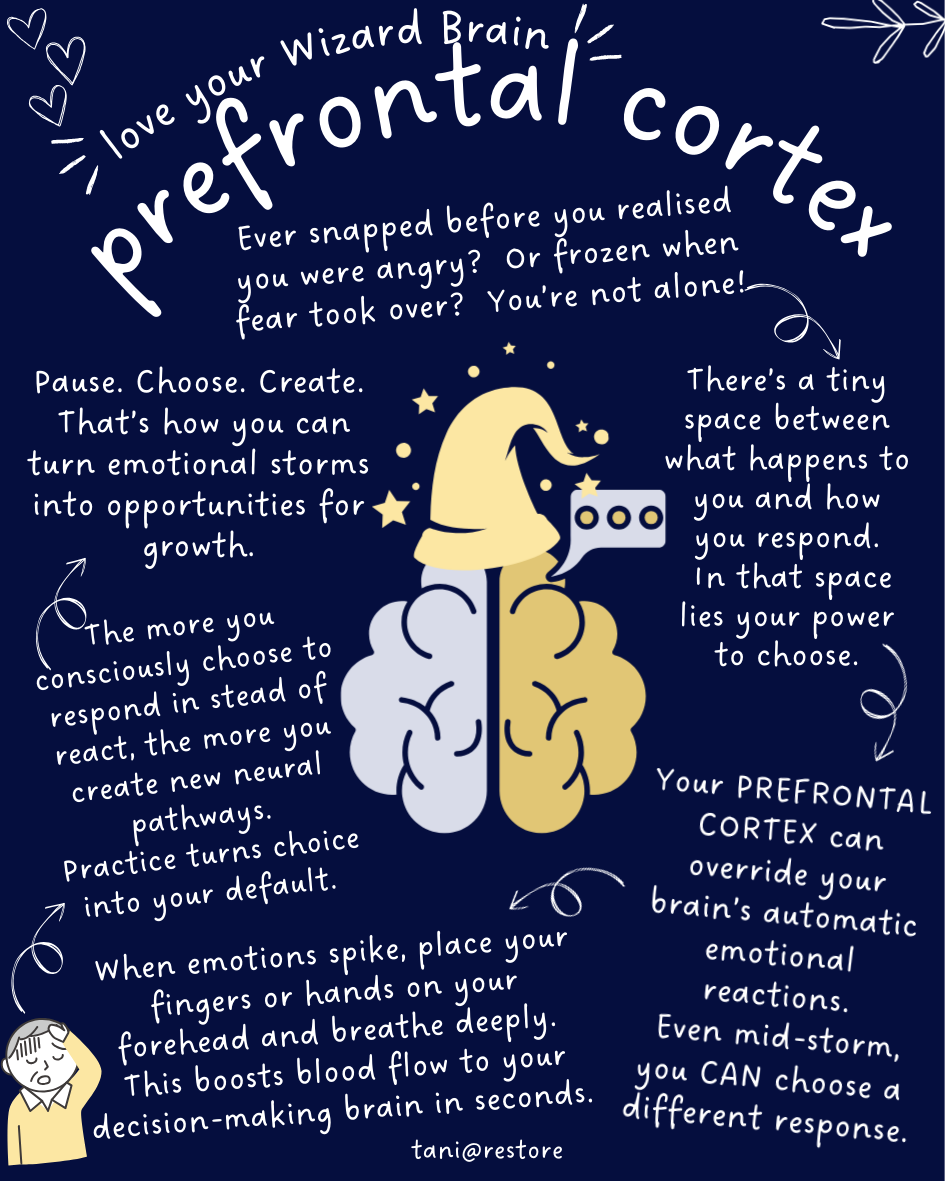The Tiny Space That Changes Everything: How to Stay in Control When Emotions Take Over
- TANI DU TOIT

- Aug 15
- 3 min read
Ever had one of those days where it feels like your emotions are running the whole show – and you’re just along for the ride? Maybe you snapped before you even realised you were angry... or your heart was pounding with anxiety before you could take a breath.
We’ve all been there.
But here’s something most people don’t know: there’s a tiny, often-overlooked space between what happens to you and what you do next. And that space changes everything.
I first understood this through the story of Dr Viktor Frankl, who lived through something I can barely imagine – the concentration camps of World War II. Stripped of every external freedom, facing suffering on a scale most of us will thankfully never know, he made a life-changing discovery:
"Between stimulus and response, there is a space. In that space lies your power to choose."
That "space" is always there - even when it feels lost
Frankl didn’t write those words from the comfort of an armchair. He lived them, moment by moment, in a place where hope was a rare commodity. He proved that even when emotions feel overwhelming – when fear, rage, grief, or despair take over – that space is still there.
It’s just harder to find until you know where to look.
Your brain is built to help you
Modern neuroscience confirms what Frankl discovered in the most brutal circumstances. Dr Daniel Siegel’s research shows that your prefrontal cortex – the part of your brain responsible for conscious decisions – can override the emotional, automatic reactions from your limbic system. In other words, you’re biologically wired to pause and choose differently, even in the middle of an emotional storm. And no – this isn’t about pretending you’re not upset. It’s about realising you can feel emotions fully and still decide how you want to respond.
Every choice shapes your future
Each time you make a conscious choice rather than falling into a knee-jerk reaction, you’re rewiring your brain. Think of old habits like deep ruts in a dirt road – easy to fall into because you’ve travelled them so often. But with repetition, you can carve out fresh paths.
Your brain doesn’t care if you’re dealing with mild irritation or all-consuming anger – the same neuroplasticity principles apply. Every conscious choice strengthens the new pathway.
Two simple ways to step into the space
1. The Forehead Pause
When emotions are high, place your hands (or just a couple of fingers) gently on your forehead and take a slow breath. This increases blood flow to your prefrontal cortex, helping you find that pause where choice lives – often in seconds.
2. Morning End Result Visualisation
Before the day gets moving, take one minute to set your intention for how you want to respond to whatever emotions come your way. Examples:
Today, I welcome all emotions as information and choose responses that serve my highest good.
Today, I take a deep breath before responding in ways that align with my wellbeing.
This isn’t wishful thinking. It’s brain training. You’re reminding yourself – and your nervous system – that you have options.
Practice, not Perfection
You won’t get it right every time. Some days you’ll forget, and that’s fine. This is about tipping the balance towards conscious choice – one moment, one decision at a time.
With practice, you’ll find your “wise friend” – that grounded part of you that knows what’s best – becomes easier to hear, even when emotions are loud.
Next time you feel a wave of emotion ready to knock you over, remember: Pause. Choose. Create.
You’ve had this power all along.




Comments